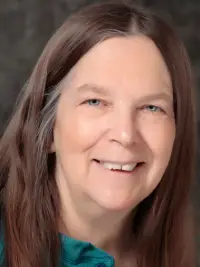BY LAURINDA LIND
I’ve had bushels of writing advice dumped at my feet, most of it inspirational for a day or so. Show, don’t tell. Kill your darlings. Throw away the first page.
Yeah, yeah, I agreed, dashing off short stories that snoozed for years in binders and file folders. I wrote crappy poems. I started and stopped. I came up with features and news stories for a small weekly newspaper for damn near fifteen years. My five kids had dramas. I got married twice.
Early in the second marriage, I saw a boxed item on a local front page: someone wanted to start a writing group. I called the number and the woman who answered said, oh, it’s not really me, it’s this other woman. So I called the other woman. She wasn’t home.
Karen and I played phone tag for a while. Even though we lived only fifteen miles apart, I didn’t meet her for weeks. When I did, she didn’t match her voice, which was a dark-haired voice, but she was blond. One of the first things we did together was go to a community writing class.
It was a half-hour away through the heaps of snow we both lived in, but we drove there every week. Our teacher was a freelance journalist who was cocksure and into genre stuff like detective-writing.
Yet– this was the crucial part for me– she wrote a thing on a blackboard that now defines my writing practice.
She drew a grid and started on the left, saying, this column is for the names of all your pieces of writing. Along the top, she said, were names of places you could send to.
A piece you wrote goes to one place. They reject it. You don’t stop; you don’t moan; you send it right out again to the next place. It limps back again; you shoot it out to place number three. Don’t let them shut you down. Just keep going.
Karen, who had been in numerous writing groups, rolled her eyes at me. That’s what everyone says, she said, dismissing it as obvious and corny.
At the time, we were trying to get our work into women’s magazines. The editors sounded arbitrary about what they were looking for. Oh, I don’t know, one of them told her. I was thinking something with snow.
With a little help, we could have delivered a trainload of real snow to the editor. I turned to sending poems. At first, I sorted them into packets of four each. Sets I thought were good, ones I hoped were good, and ones that were wishful thinking.
And I used our teacher’s approach. If rejected from A, then send to B. I kept complicated charts. And it worked. About fifty poems made it into magazines. But then I quit. It was over criticism from a different writing buddy. I was not in a good place and I took it to heart.
Eventually, I surfaced enough to send six submissions in a year, all rejected. I ditched the packet system and started sending what resonated. The second year, I submitted 227 times, with 56 acceptances. I’m up to over 600 publications: some poetry, some fiction, some creative nonfiction.
It’s not just about sending work out; it’s seeing your writing afresh, after a stranger’s eyes have been on it. It’s as if molecules from an editor’s mind come back with the rejected work to show you what went wrong.
Then you send it out again, and again, and again. It gets better every time, and so do you.
About the Author

Laurinda Lind, a former journalist and composition instructor, worked most recently as a caregiver. She lives in New York’s North Country, close to Canada. Her poems, essays, and short fiction appear in journals and anthologies in two dozen countries at A-Minor, Atlanta Review, Compose, Modern Haiku, SmokeLong Quarterly, and Stand, among others. Her first chapbook, Trials by Water, was released in summer 2024 (Orchard Street Press). She has won four international poetry competitions.
Laurinda is the winner of the December 2024 My Writing Journey Competition.











